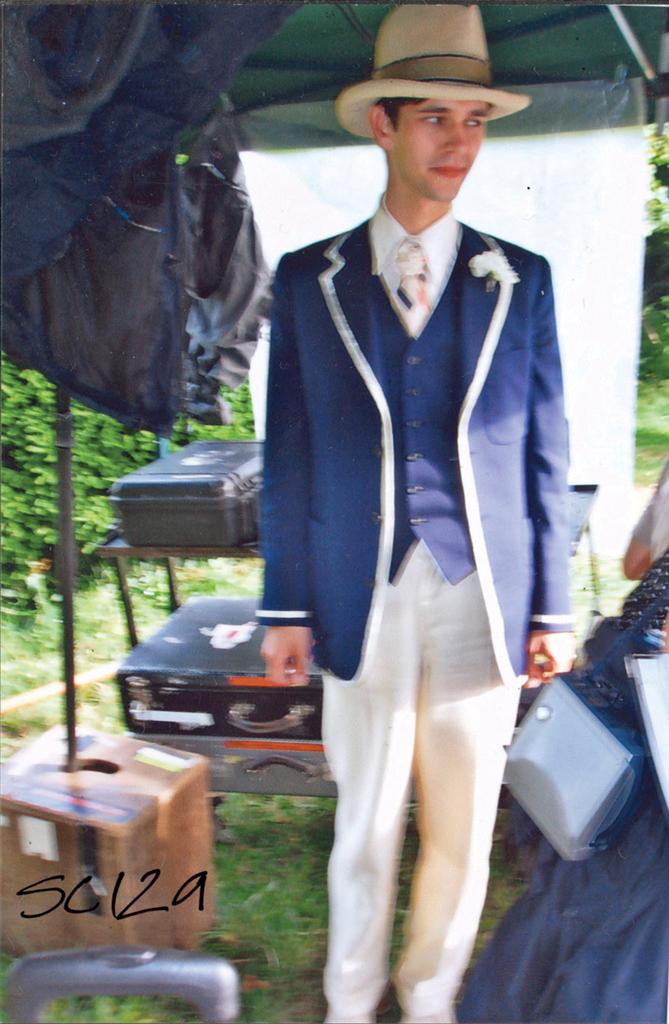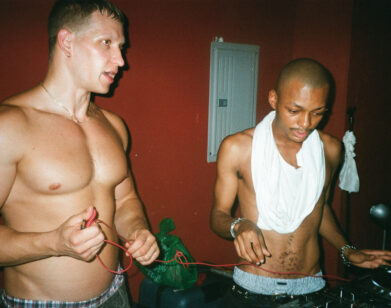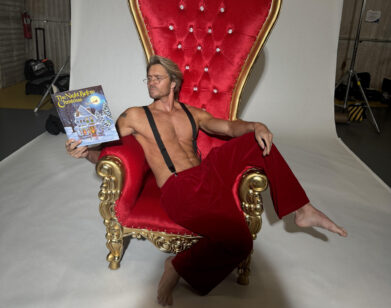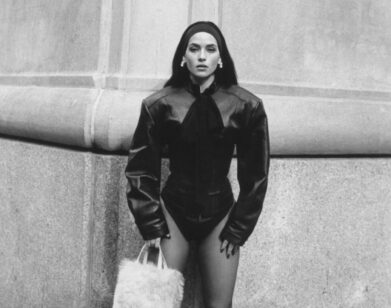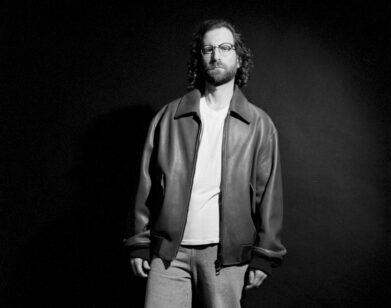Eimer NÃ Mhaoldomhnaigh
When Evelyn Waugh’s 1945 novel Brideshead Revisited was made into an 11-part British miniseries in 1981, a cult quickly surrounded the program. In it, a very young Jeremy Irons played Charles Ryder, a University of Oxford innocent who befriends the eccentric, wickedly louche, teddy bear–toting aristocrat Sebastian Flyte (played by Anthony Andrews). Charles goes to stay at Flyte’s family home, Brideshead, falls in love with Sebastian’s sister Julia (played by Diana Quick), and ends up embroiled in all of the drunken, scandalous, socioeconomic messes that apparently befell fey, rich British youths in the ’20s. Even today, that serial continues to be referenced by fashion designers (all those winter tweeds and waistcoats) and adored by Anglophiles. So when Julian Jarrold took on the hubristic task of directing a new Brideshead (in feature-length form), he turned to costume designer Eimer Ní Mhaoldomhnaigh (EE-mer nee Veil-DOWN-ig) to dress the hot young actors filling the legendary parts—Matthew Goode as Charles, Ben Whishaw as Sebastian, and Hayley Atwell as Julia. The Irish costumer previously teamed up with Jarrold on 2007’s Becoming Jane, and has also worked with directors like Jim Sheridan and Neil Jordan. Instead of copying the ’80s take on the sartorial styles of the ’20s for Brideshead, Ní Mhaoldomhnaigh followed her own impulses, creating vintage costumes by hand (the women’s clothes were done in Paris; the men’s in London) with surprising strokes of bright color and contrasting textures to achieve an ultimate English look. Who better than Burberry designer Christopher Bailey, who has himself revolutionized classic British aesthetics in recent years, to talk to Ní Mhaoldomhnaigh about how she restyled Brideshead for 2008?
CHRISTOPHER BAILEY: Where did you shoot Brideshead Revisited?
EIMER NÍ MHAOLDOMHNAIGH: We shot in Yorkshire, England, for the first few weeks.
CB: Oh, my goodness, that’s where I’m from! Where?
ENM: We were in Castle Howard. That’s where they did the original Brideshead.
CB: How long were you on location there?
ENM: For five weeks. Then we went to Oxford, Venice, and Morocco. It was my first time in Venice. I thought it was going to be really hot—we were there in August, but it was lovely. There is so much shade from the buildings since the streets are so narrow. By that point, everybody in the cast was happy because we were on the homeward stretch.
CB: How did you first get involved with doing costumes for films?
ENM: I studied fashion, but I always really loved film and was really interested in it. So I just started knocking on doors and phoning costume designers, saying, “Please, can I have a job?”
CB: Your work for this film is so beautiful. There’s such romance and poetry in the clothes. Some costumes can feel so alien to the actors, whereas the Brideshead costumes feel as if they belong to them. The costumes feel so integral to the characters. You presumably build a relationship with the actors.
ENM: Especially with something like Brideshead, I knew that Ben Whishaw, Matthew Goode, and Hayley Atwell were all quite young and these were big roles for them. Also in taking on the mantle of Brideshead, of which people still go, “Oh, Brideshead, it’s so . . .”
CB: They immediately think of Jeremy Irons.
ENM: Yeah, people go, “Jeremy Irons, Anthony Andrews.” I knew that they would be a little bit nervous about that, so it was important to try to help them to create their character.
CB: You wanted to help them do it on their own, as opposed to trying to emulate the television series.
ENM: Exactly. To say, “Well, we all know what Brideshead was, and it was fantastic, but let’s talk about 2008 and start with a fresh plate.”
CB: How did you yourself start? Were you thinking more evocatively of the period, because I’m sure, even for you, it was difficult to put the original Brideshead in a box and start in a 2008 way of thinking. What’s funny is that someone gave me the whole DVD set of Brideshead two Christmases ago, and I just watched it about a year ago.
ENM: They did a beautiful job on that series. Some of the crew members said, “Oh, no, I couldn’t watch it because then I’d only be thinking about that.” But I did watch it. It was easy for me to say, “Okay, quite lovely, now move on . . .”
CB: I’m the same way when I’m working. I’m able to look at lots of different things and then put them in a little box in my head and say, “Okay, seen that, but then this is my point of view, my vision.” Also, in the original series, I guess because of the quality of the film, the colors were . . . I won’t say crude, but they weren’t particularly sophisticated. With your costumes, there is a sensitivity and harmony that you don’t get in the series.
ENM: Color is very important, because things can be really fleeting onscreen. You want to try to create a mood and an atmosphere. If somebody stands in front of you, you can say, “Wow, look at her or him! Don’t they look amazing!”
CB: You can stare for a little while.
ENM: Yeah. But on film, you put a lot of work into something and it’s gone.
CB: Three seconds. That’s the shot.
ENM: She steps out of the car, and the next time you see her she’s having dinner and she’s changed. So you want to draw people in. There’s a scene where Charles is at home in London, and the house is very dark. Then he goes to Oxford, and it’s all students. Then he goes to Venice, and it’s very romantic, very passionate. So you’re trying to evoke different atmospheres. You’re all the time thinking about the character and the place, the person and the place.
CB: Did you shoot the film in sequence? That’s what I find most difficult about making films. You might start shooting the end at the beginning because of a particular location.
ENM: It is so hard on the actors. I’ve only ever worked on one film that was shot in sequence, The Wind That Shakes the Barley [2006], which Ken Loach directed. That’s how he works, but he’s unique in that way. Luckily, on Brideshead, Morocco was our last location, and there is the scene that is the last time Charles and Sebastian meet. We did that the last day, so that was a good-bye. It was lovely. But it is difficult for the actors. For me, it’s just logistics.
CB: I was just going to say that there must be a huge amount of logistics involved, along with the whole creative side.
ENM: It is a big logistics operation. Just a few minutes ago, I was talking to this girl about another job I’m starting in a week’s time, and she said, “I think we should run this like a military operation.”
CB: Fantastic. That’s the way it has to be.
ENM: I’m sure for you, too, it’s also about budget and sourcing the fabric. Is it going to get here on time? Are the people ready to start making the stuff? All deadlines. It’s not about sitting with a pencil and saying, “Oh, I think this is really pretty.”
CB: That’s how I think people imagine we design, that we sit there with a few pens and pencils and romantically gaze into the stars to create these extravagant sketches.
ENM: That there are all these people waiting for you to hand them these lovely sketches.
CB: Exactly . . . waiting for you to roll off a sketch, and they run away and it comes back made.
ENM: And you say, “Oh, I think this should be an inch shorter, darling.”
CB: So your life’s not like that? I thought it was! [both laugh] But I think that is what also really gives our industry its energy, that there are so many people involved to make it all come together. In terms of your career, did you want to specialize in British period dramas, or did it just happen that way?
ENM: You never know what you’re going to be offered, you know? I just always hope that it’s going to be something interesting. I have done a few period dramas in the last several years and absolutely loved it—especially the whole ’20s and ’30s period. I love the ’30s. And the ’40s are just beautiful, too.
CB: Particularly today, there’s something beautiful about nostalgia and the romance of history. And whether or not it really was like the way it feels in your head is almost irrelevant.
ENM: For costumes, it’s important not to say, “I’m going to reproduce something.” It’s more like, “I’m going to evoke a creation.”
CB: I think what’s in your head is sometimes truer to the spirit of the times as opposed to trying to be so referential that you’re basically doing a carbon copy.
ENM: You might have a full rack of vintage pieces and an actor might come in and start trying them on and they just don’t work. So you really do need to look at the person—at the actor and the character—their shape and what they are doing, and take it from there. When it’s a low-budget production, it can be very difficult if you don’t have the money to make stuff and you’re trying to find pieces that will work on somebody who perhaps has a more modern body shape.
CB: The proportions of people have changed so dramatically that when you try a vintage piece on a person today, it’s completely out of context.
ENM: That’s why undergarments and corsetry are so important in creating a silhouette. If you get the proportions wrong, you completely lose the sense of the scene.
CB: That’s what people forget about fashion—it’s not all things for all people. It’s important to understand your own character and what suits you and what you enjoy wearing, because otherwise, people become victims to clothes or to fashion or to style. It’s probably what we all describe as “personal style”—when you have that self-confidence and know what works for you and what doesn’t work for you.
ENM: A lot of times I think people get stuck as well. They think, Oh, it’s only this that suits me.
CB: It’s interesting when you see older generations, how basically they’ve stuck with what they wore in middle age. It’s quite reflective of our culture that at some stage you stick with the style you defined. Otherwise you would see the majority of older people wearing much more modern clothes.
ENM: When you see older people wearing designer stuff, they can look absolutely amazing! And then sometimes you see an older person wearing a belly top or something . . . It could look really scary. So there are two extremes to that equation.

